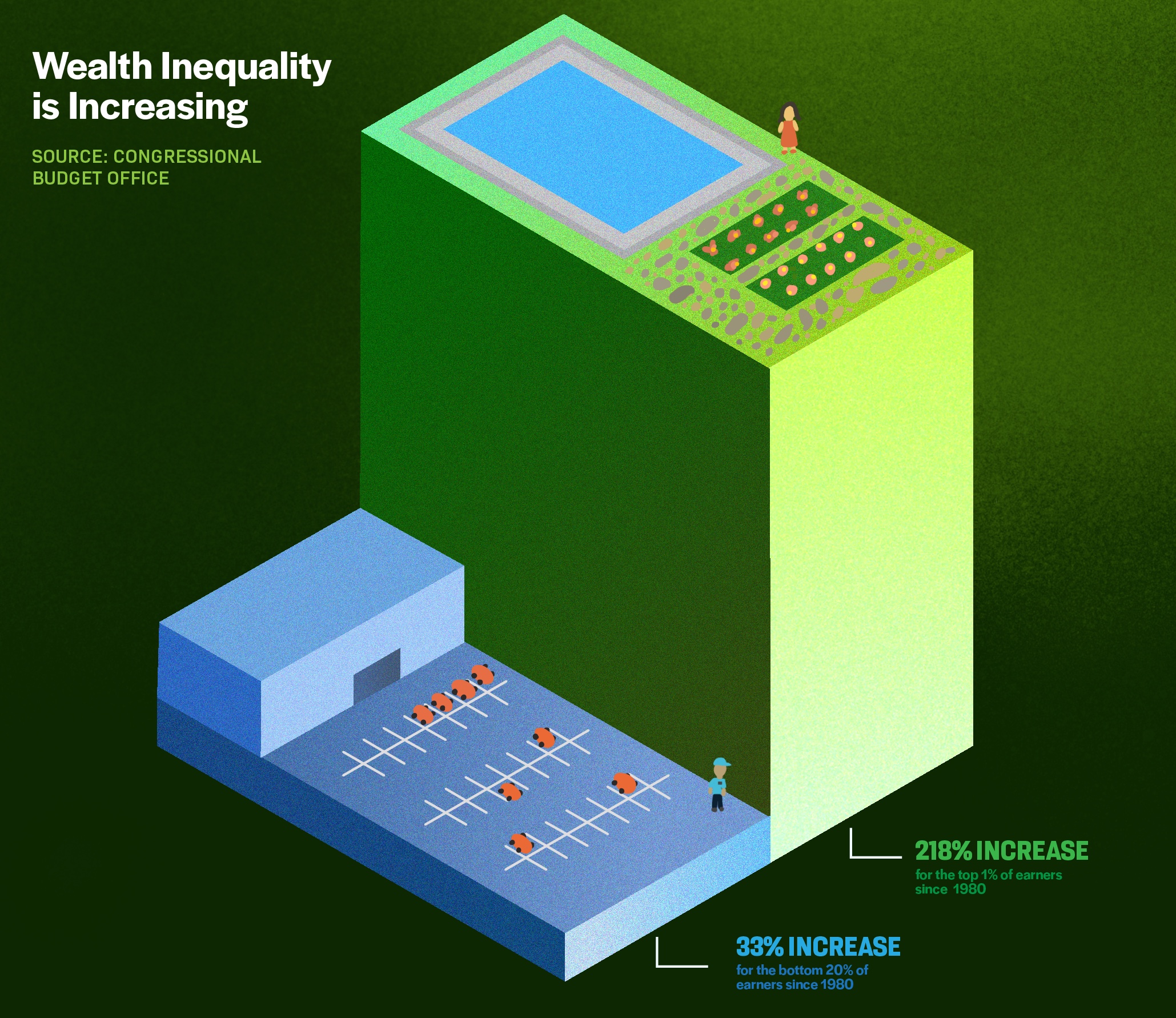
Raising the minimum wage sounds like common sense, right? I mean, who can live off of $7.25 an hour in this day and age?
I would agree; it does sound simple. As the times change, monetary value changes, so the minimum wage should be set accordingly.
A full-time worker works 40 hours a week at $7.25 an hour, a gross wage of $15,080 a year and $1,256.67 a month. This is before deductions such as FICA taxes, which are 7.65% of your paycheck, and federal income taxes, which fall in the lowest income tax bracket of 10 percent. A single person with no dependents takes home only $13,673.38 a year with all deductions taken out.
Following that linear thinking, we would also figure that raising the minimum wage would lift many Americans out of poverty and debt. It sounds like a win-win situation, right? So why so much controversy?
Because raising the minimum wage has a more significant effect on the economy than simply lifting thousands of people out of poverty and debt.
The federal minimum wage was created in 1938 under the Fair Labor Standards Act (FLSA) to guarantee fair and minimum wages, overtime pay and child employment standards to protect children from child labor.
In 1938, the minimum wage was $0.25, slowly increased to the current $7.25 in 2009. Georgia’s minimum wage is $5.15 an hour, one of the only states to have a lower than federal minimum wage.
Initially, the minimum wage was to ensure fair wages to jobs that require little to no training or schooling. In 1938, it was to protect workers from the greed of capitalism. Capitalism does not care about workers because it cannot profit above the welfare of its workers. So, to both protect the free market and the laborers, the minimum wage was introduced by President Franklin D. Roosevelt.
Over the years, minimum wage jobs became entry-level jobs, populated mostly by teenagers, students and other part-time workers. The characteristics of minimum wage workers in 2020 showed that one-fifth of hourly paid workers were under the age of 25. They made up 48% of paid federal minimum wage, among other attributes of workers.
But there is a kink in the system; those entry-level jobs are not just populated by students, teenagers and part-time workers; there are people who have no education or training that rely on the jobs to make a living. There are families, immigrants and impoverished people dependent on a stable entry-level job — even if it’s not meant to support a family.
How can we be okay with workers who tirelessly work all day, sometimes overtime, picking tomatoes or assembling factory items and barely making enough to buy food?
The current minimum wage does not account for the inflation in market value; the federal minimum wage reached its highest actual value in 1968; at the time, it was $1.60. Since then, the minimum wage’s value has not kept up with productivity growth. Had it grown at the rate it was in 1968, it would now be $24.18 in 2020.
However, raising the minimum wage abruptly to $24.18 or even to $15 would disrupt the economy by impacting job security, hurt businesses and forcing some to close, increase the price of goods, increase the cost of housing and so many other things.
Even raising the minimum wage to $10 or $15 would still be under its inflated value. This also means that all workers working on an hourly wage are subjected to the same issues as the minimum wage worker.
These arguments have some basis; however, the cost of consumer goods and housing has already increased, but the minimum wage has not. Profits and bonuses for many companies and their CEOs have rapidly increased, yet their bottom line wages have not.
If the minimum wage remains as is, for many, the American Dream is becoming a fantasy.
